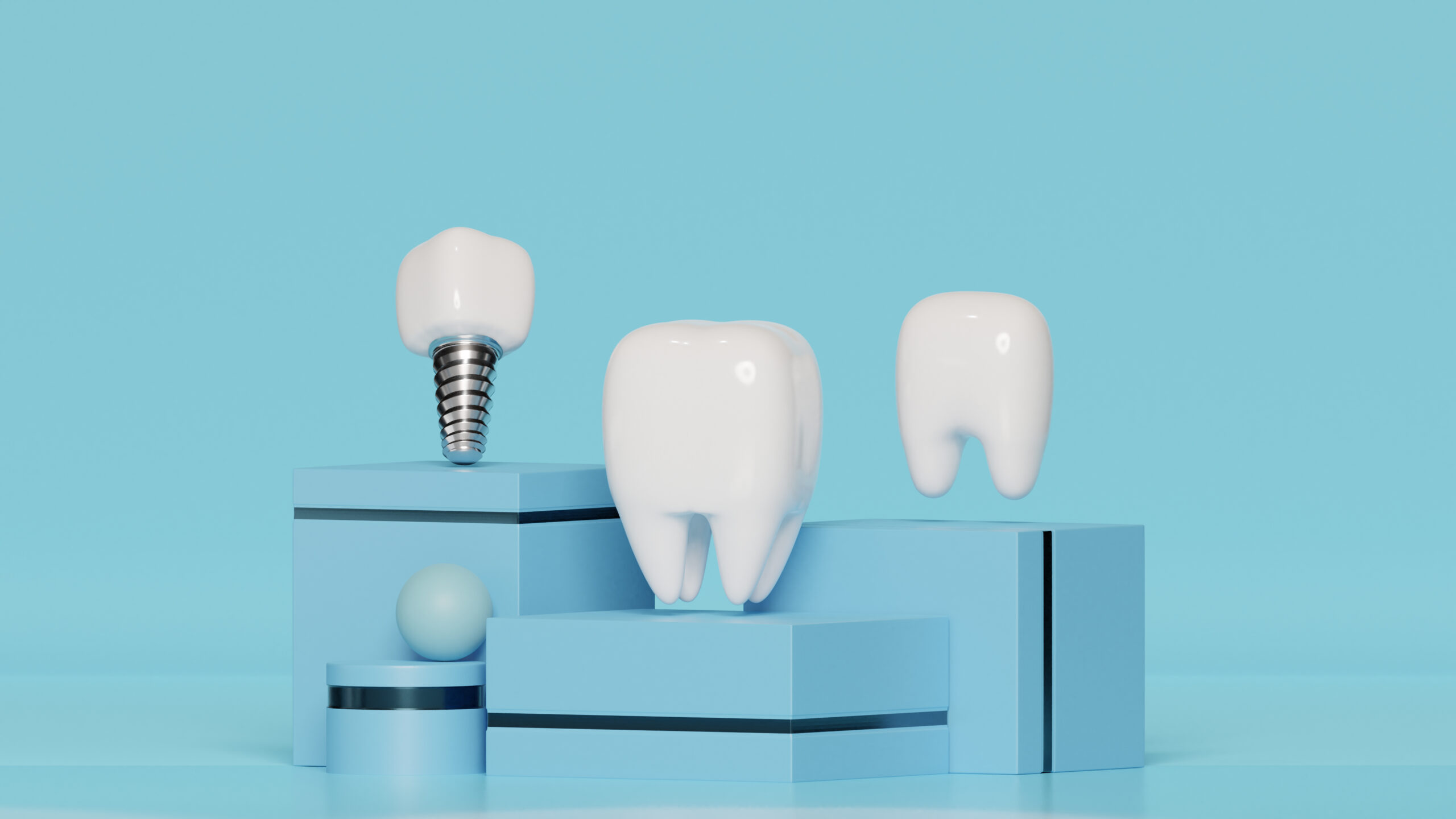
Losing a tooth can be a life-changing event. It impacts not only your smile but also your ability to chew properly and speak clearly. Fortunately, dental implants have revolutionized the way we approach tooth loss, offering a long-term solution that restores both function and appearance. If you’re considering dental implants or have been recommended for one, this comprehensive guide will help you understand the benefits, the step-by-step process, and what to expect during the recovery phase.
What Are Dental Implants?
A dental implant is a titanium post or frame that is surgically placed into the jawbone beneath the gums. The implant itself serves as a replacement for a missing tooth root. Over time, the implant fuses with the jawbone in a process called osseointegration, making it a stable foundation for a replacement tooth or bridge. The final restoration, usually a crown, bridge, or even dentures, is attached to the implant, providing a natural look and function that mimics your own teeth.
Dental implants are often the preferred choice for replacing missing teeth because they provide a permanent, stable solution that feels and functions like natural teeth. Unlike traditional dentures, implants do not slip or require adhesives, and they can help preserve the health of your jawbone.
Benefits of Dental Implants
Dental implants come with a host of benefits, making them a top choice for tooth replacement. Here are some of the most notable advantages:
- Improved Appearance: Dental implants look and feel like natural teeth. Because they are custom-designed to match the size, shape, and color of your existing teeth, they seamlessly blend into your smile.
- Enhanced Functionality: Unlike dentures or bridges, which can shift or feel unstable, implants function just like your natural teeth. This means you can eat, speak, and smile confidently without worrying about your tooth replacements moving or coming loose.
- Durability and Longevity: With proper care, dental implants can last for decades, making them a long-term solution for tooth loss. While traditional dentures or bridges need to be replaced every few years, dental implants can provide a lifetime of service with minimal maintenance.
- Preservation of Bone Structure: When a tooth is lost, the underlying jawbone can begin to deteriorate over time, leading to further tooth loss and facial changes. Dental implants help preserve the bone structure by stimulating the jawbone and preventing bone loss, which is something dentures or bridges cannot do.
- Improved Comfort: Dental implants are placed directly into the jawbone, so they become a permanent part of your mouth. This means no more uncomfortable slipping, rubbing, or irritation, which is a common issue with removable dentures.
- Easy Maintenance: Unlike dentures, which require special cleaning solutions, implants are cared for just like natural teeth. Regular brushing, flossing, and routine dental check-ups are all that’s needed to maintain your implants.
The Process of Getting Dental Implants
The process of getting a dental implant typically involves multiple stages, each requiring a certain amount of time for healing. The overall process can take anywhere from a few months to a year, depending on the complexity of your case and whether additional procedures (such as bone grafting) are needed. Here is a breakdown of what you can expect:
1. Initial Consultation and Planning
The first step in getting dental implants is a consultation with your dentist or oral surgeon. During this visit, the dental professional will:
- Examine your oral health: This includes checking your gums, teeth, and jawbone to ensure they are healthy enough for implants. Your dentist may take X-rays or 3D scans to assess the condition of your jawbone.
- Discuss your medical history: It’s important for your dentist to understand any pre-existing conditions or medications that may affect the success of the implant procedure.
- Develop a personalized treatment plan: Based on your needs, your dentist will determine the number of implants required, the type of implant that will work best for you, and whether any additional procedures (such as bone grafting or sinus lifts) will be needed.
2. Implant Placement Surgery
The next step is the actual implant surgery. The procedure is typically performed under local anesthesia to ensure you are comfortable and pain-free. In some cases, sedation may be used for anxious patients.
Here’s how the surgery generally works:
- Incision and Implant Placement: The surgeon will make a small incision in the gum tissue to access the jawbone. They will then carefully place the titanium implant into the bone. Once the implant is positioned correctly, the gum tissue will be stitched back together.
- Osseointegration: After the implant is placed, it needs time to fuse with the jawbone. This process, called osseointegration, typically takes several months (3-6 months) and is critical for the long-term success of the implant. During this time, the implant becomes securely anchored into the bone.
In some cases, the implant placement and temporary restoration may happen in one appointment (known as same-day implants), but for most patients, there is a healing period between the implant placement and the next stage.
3. Abutment Placement
Once osseointegration is complete, the next step is to attach an abutment to the implant. The abutment is a small connector piece that sits on top of the implant and serves as the base for the final crown or restoration. The gum tissue may need to be reopened slightly to expose the implant before the abutment is attached. Once the abutment is in place, the gums will heal around it.
4. The Final Restoration (Crown, Bridge, or Denture)
After the abutment is securely placed, your dentist will take impressions of your mouth to create a custom restoration that fits perfectly. The restoration could be:
- Crown: If you are replacing a single tooth, a crown will be placed on the abutment, giving you a tooth that looks and functions like your natural teeth.
- Bridge: If you’re replacing multiple missing teeth, a bridge may be used, which consists of several crowns attached together to fill the gap.
- Full or Partial Denture: If you’re replacing a full arch of teeth, a full or partial denture can be attached to implants, providing a secure fit that doesn’t require adhesives.
The final restoration is custom-designed to match your existing teeth in terms of size, shape, and color, so it blends seamlessly with your smile.
Recovery and Aftercare
Recovery from dental implant surgery varies from patient to patient, but the process is generally well-tolerated. Here’s what you can expect during the recovery period:
- Post-Surgery Discomfort: After the implant surgery, it’s common to experience some discomfort, swelling, or bruising. Your dentist will provide instructions on managing pain and swelling, typically with over-the-counter pain relievers and ice packs.
- Diet and Activity Restrictions: For the first few days after surgery, you may need to stick to soft foods and avoid chewing on the side of the implant. You’ll also need to refrain from vigorous physical activity to allow for proper healing.
- Oral Hygiene: Maintaining good oral hygiene is crucial to ensure the success of the implant. While the surgical site is healing, you’ll need to follow specific brushing and rinsing instructions to avoid infection.
- Follow-Up Appointments: You will have several follow-up appointments to monitor the healing process. These visits will ensure the implant is fusing correctly with the bone and that there are no signs of complications.
Over the next several months, as your jawbone continues to integrate with the implant, you should begin to notice improvements in comfort and function. Once the final restoration is placed, you’ll be able to enjoy your new smile with confidence.
Potential Risks and Complications
While dental implants have a high success rate, as with any surgery, there are potential risks and complications. These may include:
- Infection at the implant site: Infection can occur if proper aftercare instructions aren’t followed. If untreated, it can affect the success of the implant.
- Nerve damage: In rare cases, the implant may cause damage to surrounding nerves, leading to numbness or tingling.
- Implant failure: In some cases, the implant may fail to fuse with the bone properly (failure of osseointegration). This can lead to implant loosening and the need for removal.
Your dentist will closely monitor your progress throughout the process to minimize these risks and ensure the best possible outcome.
Conclusion: Why Choose Dental Implants?
Dental implants are an excellent option for replacing missing teeth, offering numerous benefits such as improved appearance, function, and longevity. The process is highly predictable and can restore your smile with a natural-looking, durable solution. While the procedure requires time and commitment, the results are well worth it, providing a long-lasting and stable foundation for your new teeth.
If you’re considering dental implants, it’s important to consult with a qualified dentist or oral surgeon who can evaluate your individual needs and create a personalized treatment plan. With proper care, dental implants can last a lifetime, helping you enjoy a healthy, confident smile for years to come.




